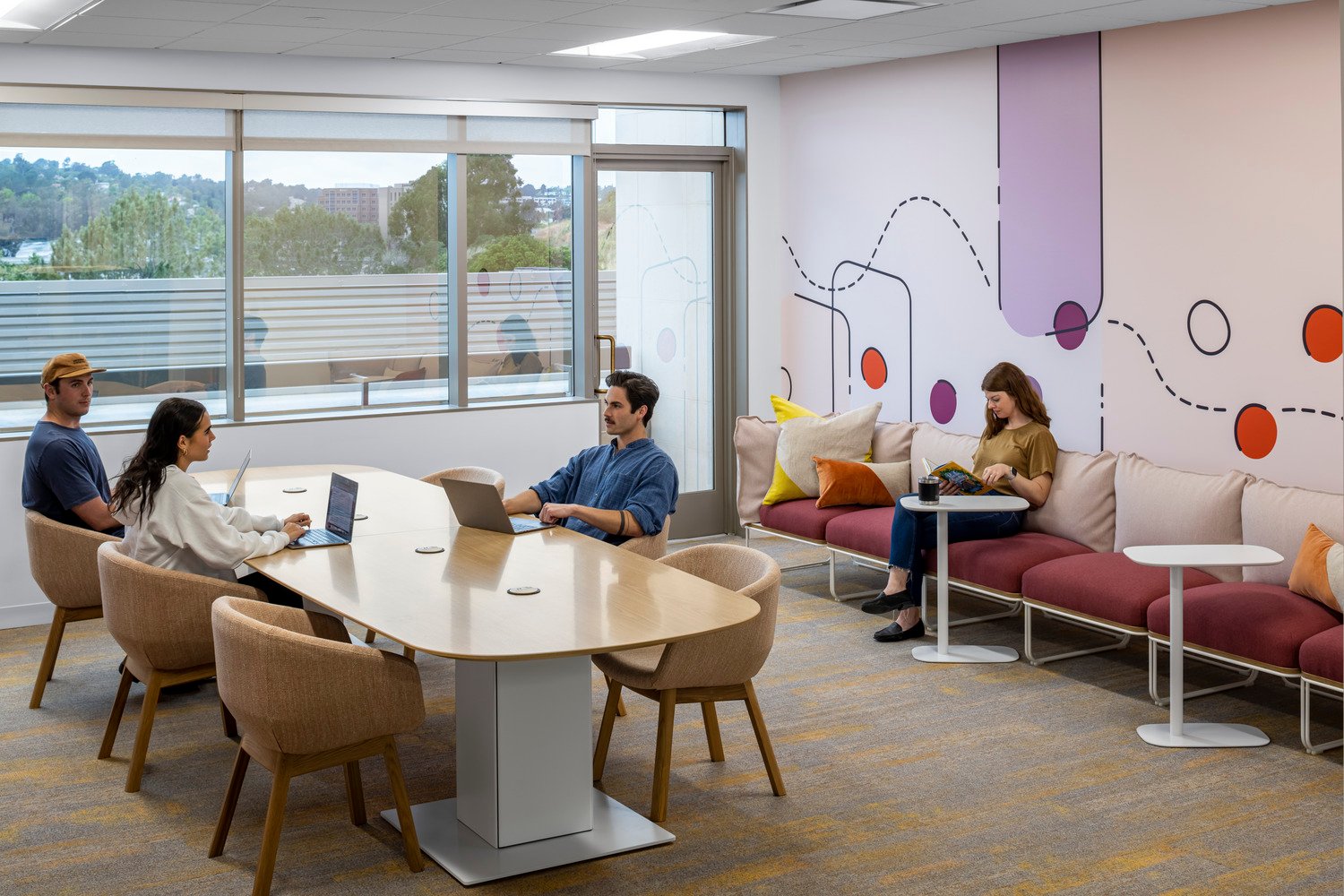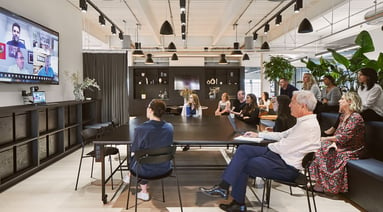Workplace strategies to boost innovation
To boost productivity and inspire innovation, workplaces need to be designed intentionally and thoughtfully for a hybrid workforce.
According to From Restrictions to Resilience, employers are less confident this year (76%) than in 2023 (81%) that their workplace enables employees to be innovative. With changing work habits, open-plan offices can impact focus and collaboration, challenging productivity. Consider these ideas:
At a glance
- Developing a workplace strategy to boost workforce enablement
- Creating tailored work environments
- Integrating workplace technologies
Developing a workplace strategy to boost workforce enablement
Move beyond benchmarking
Today, companies are adhering to arbitrary RTO policies, desk-sharing ratios, and space guidelines that might not truly reflect their actual needs. No organization fits the mold of an "average" company; employees excel when their workspace is tailored to their specific requirements. Identify your organization's unique priorities and design a space that amplifies their performance.
Design for performance
Given that many employers are losing confidence in current office fit outs to fuel innovation and productivity. Our Global Workplace research highlights key drivers to enhance performance:
- Adaptability: Future-proof spaces that support hybrid work with flexible designs.
- Well-being: Focus on mental, physical and social well-being to reduce stress, boost positivity, and build resilience.
- Enablement: Give employees tools and spaces that boost productivity and creativity while supporting individual work and small team collaboration.
- Connection: Use simple design techniques like ‘campfire’ setups with circular seating and individual power and data to encourage relationship-building and knowledge-sharing.
- Authenticity: Our survey found that 79% of employees would be happier to spend more time in the office if the workplace connected them to the organization’s brand, culture, and values. Your office fit out should spark pride among your staff.
Evolve from open neighborhood plans
For years, corporate interior design has relied on the 'neighborhood' model, offering teams designated workspaces like workstations, conference rooms, and phone booths. While effective when done correctly, it becomes counterproductive if the focus is solely on occupancy, leading to cluttered open workstations that impede focus. Instead, office spaces should encourage purposeful visits, allowing employees to accomplish tasks and socialize, rather than just occupying a desk.
Model behavior
Workforce enablement and innovation start with leadership. Research shows that employees often mirror leadership behaviors. To drive interaction, teamwork, and utilization, it's crucial to bring executives back to the office, using their influence to foster a collaborative environment without incurring extra design costs.

Orrick's Portland office supports different workstyles through a variety of space types.
Creating tailored work environments
Don’t confuse aesthetics for workplace strategy
Effective workplaces rely on smart space planning, not just looks. Practitioners often skip to 'Furniture, Fixtures, and Equipment' without a solid strategy. While aesthetics like wood and graphics enhance spaces, they shouldn't replace design decisions that influence behavior. Stylish furniture alone won't attract commuters back.
Learn from brands like Ikea, Zara, and Target
Many organizations are cutting real estate expenses as occupancy patterns shift and employee needs change. Tenant improvement (TI) allowances from landlords, usually $70–150 per square foot, only cover minor upgrades such as paint and carpet. However, brands like Ikea, Zara, and Target show that quality design is possible on a budget. Though durability may pose challenges, considering that leases typically run 5 to 7 years, a fast fashion approach to corporate interior design could be the answer.

Seismic's hybrid workplace encourages teams to come together to collaborate and connect.
Integrating workplace technologies
Invest in technology that works
Spending resources on premium mohair carpet tiles is less critical than ensuring reliable technology. As we enter our fifth year of video meetings, starting calls with "Can you hear me?" should be a thing of the past. Companies with fast Wi-Fi, private meeting rooms, seamless screen sharing, and reliable audio have a competitive edge over those who haven't invested in robust tech for hybrid meetings.

Brennan Center for Justice (BCJ) integrates technology throughout the workplace to flex and support easy interactions between people inside and outside of the office.
Connect with one of our workplace experts to learn how you can improve your office experience.

Based in San Diego, Albert is a strategy consultant with extensive experience in people-centered design and change strategies for private and public institutions. By leveraging design thinking and a user-centric approach, he moves beyond the typical motivations to explore how meaningful change can occur to foster greater organizational responsiveness, adaptability, and innovation.
Connect with Albert on LinkedIn


